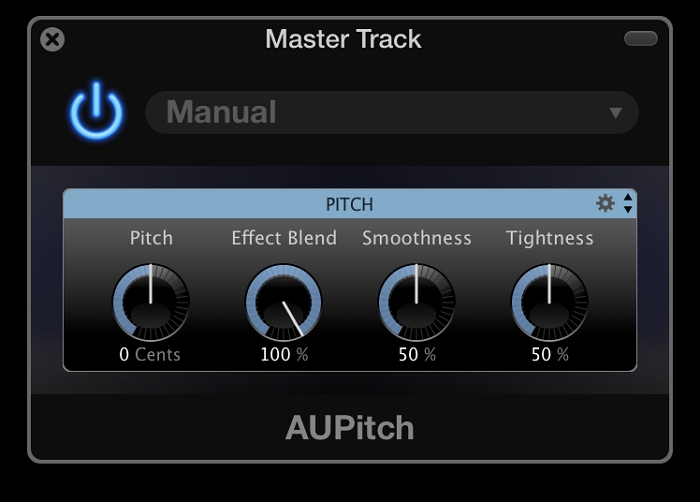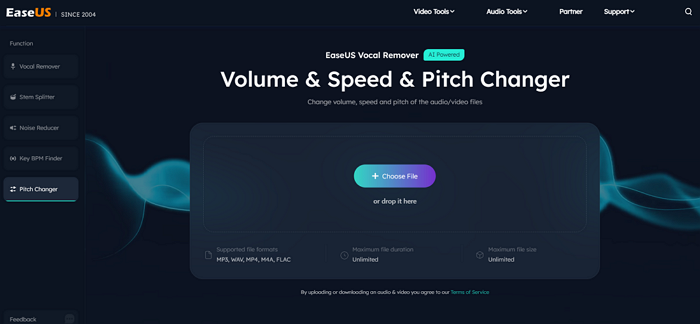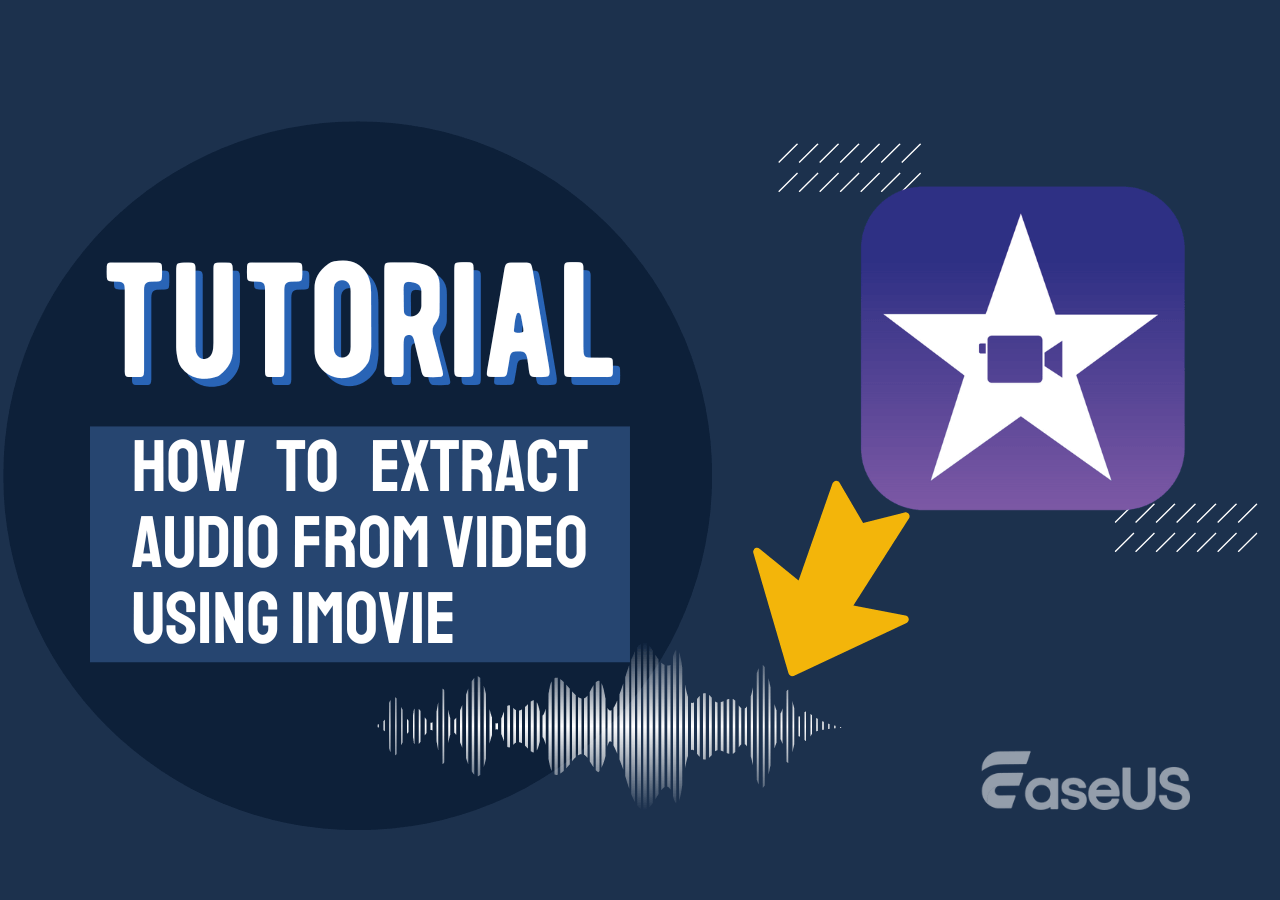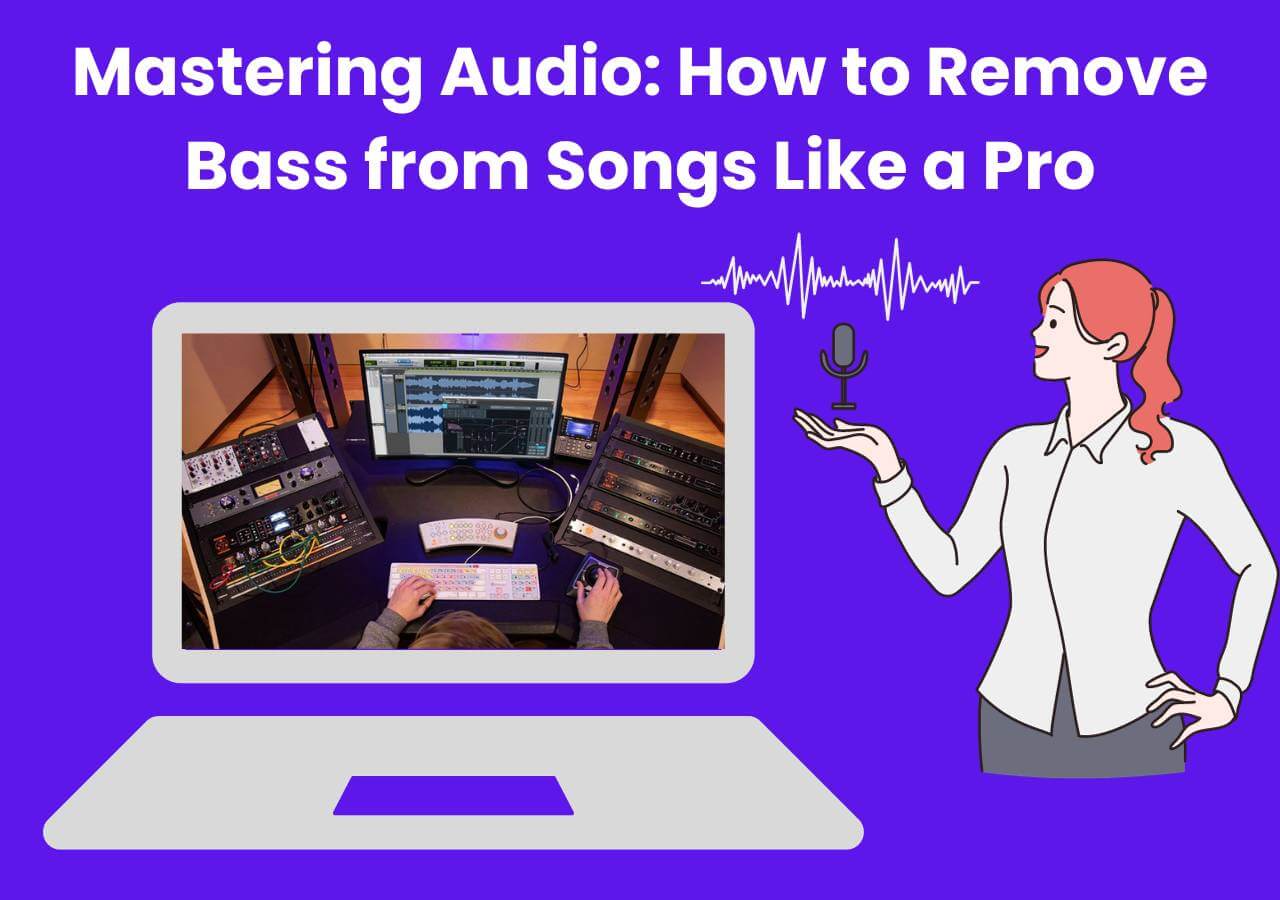-
![]()
Sofia Albert
Sofia has been involved with tech ever since she joined the EaseUS editor team in March 2011 and now she is a senior website editor. She is good at solving various issues, such as video downloading and recording.…Read full bio -
![]()
Alin
Alin is a sophisticated editor for EaseUS in tech blog writing. She is proficient in writing articles related to screen recording, voice changing, and PDF file editing. She also wrote blogs about data recovery, disk partitioning, data backup, etc.…Read full bio -
Jean has been working as a professional website editor for quite a long time. Her articles focus on topics of computer backup, data security tips, data recovery, and disk partitioning. Also, she writes many guides and tutorials on PC hardware & software troubleshooting. She keeps two lovely parrots and likes making vlogs of pets. With experience in video recording and video editing, she starts writing blogs on multimedia topics now.…Read full bio
-
![]()
Gorilla
Gorilla joined EaseUS in 2022. As a smartphone lover, she stays on top of Android unlocking skills and iOS troubleshooting tips. In addition, she also devotes herself to data recovery and transfer issues.…Read full bio -
![]()
Rel
Rel has always maintained a strong curiosity about the computer field and is committed to the research of the most efficient and practical computer problem solutions.…Read full bio -
![]()
Dawn Tang
Dawn Tang is a seasoned professional with a year-long record of crafting informative Backup & Recovery articles. Currently, she's channeling her expertise into the world of video editing software, embodying adaptability and a passion for mastering new digital domains.…Read full bio -
![]()
Sasha
Sasha is a girl who enjoys researching various electronic products and is dedicated to helping readers solve a wide range of technology-related issues. On EaseUS, she excels at providing readers with concise solutions in audio and video editing.…Read full bio
Content
0 Views |
0 min read
Quick Tips
▶️Step 1. Load the sample into Simpler.
▶️Step 2. Warp the clip so it stays within the right BPM.
▶️Step 3. Transpose semitones by adjusting values minorly.
Pitch shifting is an essential skill for music producers that allows them to change the pitch of the song, audio samples, vocals, or instruments. Whether you are tuning a vocal track, remixing songs, or creating harmonies, Ableton Live offers a variety of tools for pitch shifting.
In this article, I'll explore several ways to shift pitch in Ableton, including using built-in tools like Frequency Shifter, Simpler, or Ableton pitch shift audio effect. You can also use an online pitch shifter to facilitate things.
How to Pitch Shift Samples in Ableton with Ableton Simpler Warp
All versions of Ableton Live include Simpler, which allows you to warp samples in a way that alters pitch without impacting speed or adjust the speed without changing the pitch. When you transpose a sample in Simpler, it shifts the pitch by speeding up or slowing down playback, causing higher pitches to play faster and lower pitches to play slower. If the process were designed to maintain the same sample length while shifting pitch, it would be more granular than spectral.
There is another tool called a Sampler; the major difference between a Sampler and a Simpler is that a Sampler assigns several samples to different keys while a Simpler pitches up and down a single sample.
| ⭕Pros | ❌Cons |
|---|---|
|
|
Step 1. Place the sound into the instrument and load the sample into Simpler.
Step 2. Warp the clip so it stays within the right BPM. It's best to choose Complex Pro mode.
- Beats: Best for drums or audio with strong transients. It slices and repeats based on your chosen settings.
- Tones: Ideal for pitch-based sounds like vocals, with 'Grain Size' controlling the sound's texture.
- Texture: Good for creative effects and polyphonic sounds, with 'Flux' adding randomness.
- Re-pitch: Works like a traditional sampler, speeding up or slowing down to change pitch.
- Complex and Complex Pro: Ideal for warping full tracks with beats and melodies but use more CPU, so freezing tracks are recommended. In Complex Pro, the formant setting preserves tonal quality when shifting pitch, and the envelope can be adjusted if needed.
![]()
Step 3. Transpose the note by adjusting values minorly. 12 semitones are equal to 1 octave. Experiment with "Formants" and "Envelope" values for transposing.
- Tip
- In Simpler, open the "Controls" tab at the top right to fine-tune your sample's pitch. Under the pitch envelope, you'll find the "Transpose" and "Detune" options, which let you adjust the pitch to match the notes you play.
How to Change Pitch in Ableton 11/12 Using Frequency Shifter/Shifter
Frequency Shifter is an audio effect that changes the pitch of audio signals in HertZ by adjusting their frequency. Shifter is the new version of it for Live 11, with real-time pitch shifting in semitones or scents, LFO displaying, MIDI pitch control, and more new features included. It can be used to add metallic overtones to percussion or subtle phasing and tremolo effects to audio.
Step 1. Load your instrument or song into Ableton.
Step 2. Find it through "Audio Effects" > "Pitch & Modulation" > "Shifter."
Step 3. Use Ableton Shifter to change pitch.
- Coarse & Delay: This section offers Coarse and Fine pitch controls, and with the Wide function enabled, it adds stereo width by shifting the left and right channels differently. The Window control adjusts processing for high or low frequencies, and the Tone filter softens high frequencies. The delay can pitch up or down with each repeat, creating unique sound effects.
- LFO: You can choose from 10 wave shapes for modulation, syncing to note values or frequencies. The Amount controls pitch modulation up to 24 semitones, and Phase creates stereo width. Additional controls include a Duty cycle for waveform distortion and a Spin mode for dynamic panning effects.
- Envelope & Mode: The Envelope Follower tracks audio amplitude to modulate pitch with attack and release controls. You can choose between three pitch modes: semitone pitch shifting, frequency shifting, or Ring Modulation, which adds distortion. A sidechain option allows external MIDI control, turning steady tones into melodies or basslines.

- Notice:
- If Ableton Frequency Shifter is missing, you can use the upgraded Shifter inside Pitch and Modulation to download the legacy from the path: "Packs" >"Core Library" >"Devices" >"Audio Effects" > "Legacy" >"Frequency Shifter," or reset the Live database: close Live > delete the content in the folder: Windows: \Users\[username]\AppData\Local\Ableton\Live Database\ macOS: /Users/[username]/Library/Application Support/Ableton/Live Database/ > restart the app.
| ⭕Pros | ❌Cons |
|---|---|
|
|
See also:
Autotune Ableton Pitch Changing Without Speed
Live 12.1 makes real-time pitch correction easy for anyone working with vocals. You can choose a scale or create your own to keep all notes in tune. Auto Shift lets you create harmonies from any single-note audio using a MIDI sidechain and automatically corrects or changes the pitch of vocals or instruments.
| ⭕Pros | ❌Cons |
|---|---|
|
|
Step 1. Locate the tool in the audio effects.
Step 2. Shift the pitch.
- Choosing the Right Scale: Start by picking the correct scale for your vocal, like major or minor, in Ableton Live. This keeps the notes in tune with the key of the song.
- Adjusting Correction Strength: The Correction Strength setting controls how much pitch correction is applied. Higher values give a stronger auto-tune effect, perfect for pop or trap vocals.
- Customizing Smoothness: The Smoothness control lets you adjust how smooth or sharp the pitch changes are, helping you get either a natural or robotic sound.

Ableton Real-Time Pitch Shift Plugin on Mac
Audio Units (AU) are system-level plug-ins developed for macOS that enable real-time audio processing, generation, and manipulation with low latency. They are commonly used in Apple applications such as GarageBand, Logic Pro, and Final Cut Pro to handle audio streams efficiently.
| ⭕Pros | ❌Cons |
|---|---|
|
|
Step 1. Download and run the AU installer. Find the plugin in the folder:
- Macintosh HD:/Library/Audio/Plug-Ins/Components/
- Or Macintosh HD:/Users/[Username]/Library/Audio/Plug-Ins/Components/
Step 2. Open Ableton and go to its "Preferences" > "Plug-Ins" to activate it.
Step 3. Use the plugin. Adjust the pitch as desired.

Share these pitch-shifting methods with Ableton users!
Change Pitch Without Changing Speed Online Easily
You can turn to an easier solution to change the music pitch online. EaseUS Pitch Changer shifts song pitch without losing audio quality and allows you to change the volume and speed at the same time. You can also remove vocals from a song to make a karaoke song or extract instruments from an audio file. It supports MP3, MP4, WAV, MKV, MOV, FLAC, and more file formats and uploads 350 maximum file size each time.
Key Features
- Change song pitch while maintaining quality.
- Support multiple file formats.
- Accessible from anywhere and any device.
- Versatile audio tool for vocal and noise removal.
Step 1. Go to the official site of EaseUS Vocal Remover. Find the "Pitch Changer" from the left sidebar.

Step 2. Click "Choose File" in the center of the main page. Now, choose the music or video file that you want to change pitch. The AI tool will begin to analysis and show you the BPM and Key as the pic shows below.

Step 3. Now, modify the pitch with the small dot to the key you want. After that, click "Save and Export" to save to the local file location.
Wrapping up
Ableton Live provides various tools for pitch shifting, each suited for different needs—whether you're adjusting pitch, creating new sounds, or shifting entire tracks. Tools like the Simpler's Warp Mode, Frequency Shifter, Auto-Tune, and AU plugin each have their strengths, allowing you to control or explore pitch in different ways.
For a simpler and more user-friendly audio tool, visit EaseUS Online Pitch Changer to alter songs' pitch without changing the speed or audio quality.
How to Pitch Shift Samples in Ableton FAQ
1. Does Ableton have a pitch shift?
Yes, Ableton has a pitch shift feature. You can adjust the pitch by up to +/- 24 semitones. There are also controls for attack and release. Additionally, you can choose from three different pitch-shifting modes: one shifts the pitch in semitones, while another shifts the pitch by frequency in hertz, offering a wider range of adjustment.
2. Does Ableton have a frequency shifter?
Yes, Ableton Live has a Frequency Shifter effect. It's a versatile sound design tool that shifts the frequencies of audio either up or down. Depending on how it's used, it can create anything from subtle tremolo effects to more intense, dissonant, metallic sounds.
3. How do you change the pitch in Ableton?
You can adjust the pitch in Ableton in semitones using a pitch dial to change the pitch. You can modify the pitch values by moving the dial with your computer mouse or through a MIDI controller.
4. Does Ableton have built in pitch correction?
Yes, Ableton has built-in pitch correction tools. When you select an audio clip, you'll find controls for both warping and pitch adjustment to the left of the waveform. These controls, when used with Ableton's Tuner, allow for precise control over the pitch of individual notes.




